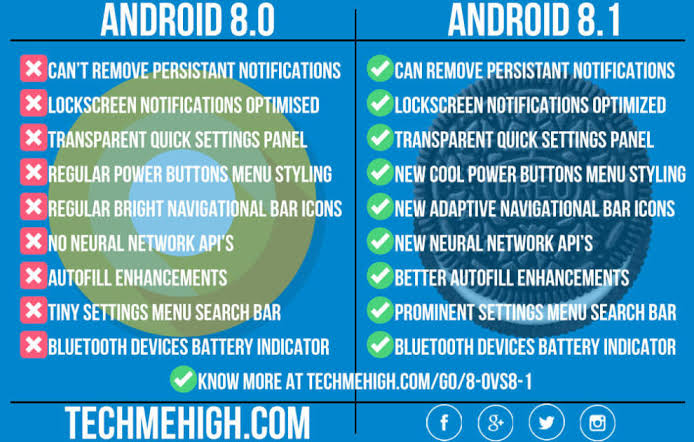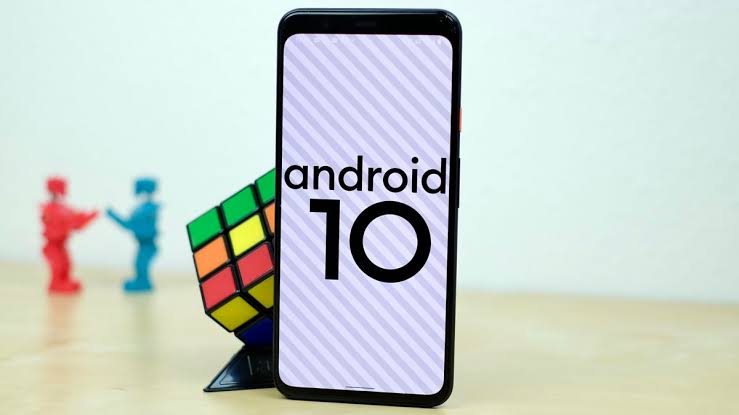Android :-
Android is a mobile operating system based on a modified version of the Linux kernel and other open source software, it is designed primarily for touchscreen mobile devices such as smartphones and tablets. Android is developed by a consortium of developers known as the Open Handset Alliance and commercially sponsored by Google.
Android Inc. was founded in Palo Alto, California, in October 2003 by Andy Rubin, Rich Miner, Nick Sears, and Chris White. Rubin described the Android project as having "tremendous potential in developing smarter mobile devices that are more aware of its owner's location and preferences". The early intentions of the company were to develop an advanced operating system for digital cameras, and this was the basis of its pitch to investors in April 2004. The company then decided that the market for cameras was not large enough for its goals, and five months later it had diverted its efforts and was pitching Android as a handset operating system that would rival Symbian and Microsoft Windows Mobile.
Android stands for :- "Actually Nothing Distinct, Really Only Iphone Duplication"
First android phone :-
The first commercially available smartphone running Android was the HTC Dream am, also known as T-Mobile G1, announced on September 23, 2008.
Android versions: a living history from 1.0 to 12 :-
a. Android versions 1.0 to 1.1:
The early days Android made its official public debut in 2008 with Android 1.0 — a release so ancient it didn't even have a cute codename.
b. Android version 1.5: Cupcake
With early 2009's Android 1.5 Cupcake release, the tradition of Android version names was born. Cupcake introduced numerous refinements to the Android interface, including the first on-screen keyboard
c. Android version 1.6: Donut
Android 1.6, Donut, rolled into the world in the fall of 2009. Donut filled in some important holes in Android's center, including the ability for the OS to operate on a variety of different screen sizes and resolutions.
d. Android versions 2.0 to 2.1: Eclair
Keeping up the breakneck release pace of Android's early years, Android 2.0 Eclair, emerged just six weeks after Donut; its "point-one" update, also called Eclair, came out a couple months later.
e. Android version 2.2: Froyo
Just four months after Android 2.1 arrived, Google served up Android 2.2, Froyo, which revolved largely around under-the-hood performance improvements.
f. Android version 2.3: Gingerbread
Android's first true visual identity started coming into focus with 2010's Gingerbread release. Bright green had long been the color of Android's robot mascot, and with Gingerbread, it became an integral part of the operating system's appearance
g. Android 3.0 to 3.2 : Honeycomb
In 2011's Honeycomb period was a weird time for Android. Android 3.0 came into the world as a tablet-only release to accompany the launch of the Motorola Xoom, and through the subsequent 3.1 and 3.2 updates, it remained a tablet-exclusive (and closed-source) entity.
h. Android version 4.0: Ice Cream Sandwich
i. Android versions 4.1 to 4.3: Jelly Bean
Spread across three impactful Android versions, 2012 and 2013's Jelly Bean releases took ICS's fresh foundation and made meaningful strides in fine-tuning and building upon it. The releases added plenty of poise and polish into the operating system and went a long way in making Android more inviting for the average user.
j. Android version 4.4: KitKat
Late-2013's KitKat release marked the end of Android's dark era, as the blacks of Gingerbread and the blues of Honeycomb finally made their way out of the operating system. Lighter backgrounds and more neutral highlights took their places, with a transparent status bar and white icons giving the OS a more contemporary appearance.
k. Android versions 5.0 and 5.1: Lollipop
Google essentially reinvented Android — again — with its Android 5.0 Lollipop release in the fall of 2014. Lollipop launched the still-present-today Material Design standard, which brought a whole new look that extended across all of Android, its apps and even other Google products.
l. Android version 6.0: Marshmallow
In the grand scheme of things, 2015's Marshmallow was a fairly minor Android release — one that seemed more like a 0.1-level update than anything deserving of a full number bump. But it started the trend of Google releasing one major Android version per year and that version always receiving its own whole number.
m. Android versions 7.0 and 7.1: Nougat
Google's 2016 Android Nougat releases provided Android with a native split-screen mode, a new bundled-by-app system for organizing notifications, and a Data Saver feature. Nougat added some smaller but still significant features, too, like an Alt-Tab-like shortcut for snapping between apps.
n. Android version 8.0 and 8.1: Oreo
The 2017 release also included some noteworthy elements that furthered Google's goal of aligning Android and Chrome OS and improving the experience of using Android apps on Chromebooks, and it was the first Android version to feature Project Treble — an ambitious effort to create a modular base for Android's code with the hope of making it easier for device-makers to provide timely software updates.
o. Android version 9: Pie
The freshly baked scent of Android Pie, a.k.a. Android 9, wafted into the Android ecosystem in August of 2018. Pie's most transformative change was its hybrid gesture/button navigation system, which traded Android's traditional Back, Home, and Overview keys for a large, multifunctional Home button and a small Back button that appeared alongside it as need.
p. Android version 10 :
Google released Android 10 — the first Android version to shed its letter and be known simply by a number, with no dessert-themed moniker attached — in September of 2019. Most noticeably, the software brings about a totally reimagined interface for Android gestures, this time doing away with the tappable Back button altogether and relying on a completely swipe-driven approach to system navigation. (If you so choose, that is; unlike Pie, Android 10 also includes the traditional Android three-button navigation system as an option on all phones.
q. Android version 11 :
r. Android version 12 beta :
Google released the first public beta version of Android 12 at its I/O convention in May, and in a twist from the last several Android versions, the most significant progressions with the software are mostly on the surface.
Android 12 features the biggest reimagining of Android's interface since 2014's Android 5.0 (Lollipop) version. That version, as we discussed a moment ago, was the first to showcase Google's then-new Material Design standard.
It is free and open-source software; its source code is known as Android Open Source Project (AOSP), which is primarily licensed under the Apache License. However most Android devices ship with additional proprietary software pre-installed, it's most notably Google Mobile Services (GMS) which includes core apps such as Google Chrome, the digital distribution platform Google Play and associated Google Play Services development platform.
About 70 percent of Android smartphones run Google's ecosystem; competing Android ecosystems and forks include Fire OS (developed by Amazon) or Lineage OS. However the "Android" name and logo are trademarks of Google which impose standards to restrict "uncertified" devices outside their ecosystem to use Android branding.
Comparison between IOS and Android :-
->
(a) iOS is a closed system whereas Android is more open. Users have barely any system permissions in iOS but in Android, users can customize their phones easily.
(b) Android software is available for many manufacturers such as Samsung, LG etc. and this may lead to some quality problems in the cheaper phones. However, iOS is strictly controlled by Apple and there is no quality problem as there are few models.
(c) The Android applications are obtained from Google Play while iOS applications are available in the Apple app store.
(d) Integration with other devices is better in Apple iOS as compared to Google Android.
(e) There are different voice assistants for iOS and Android namely Siri and Google Assistant. Google assistant is much more powerful than Siri.
(f) The running speed of iOS devices remains consistent with time. In contrast to this, the performance of Android devices may decline over time.
As compaier to iOS Android have more active user in the world.

























Presention is pretty good and also make a blog on iOS too
ReplyDeleteComing soon
DeletePost a Comment
If you want to know anything or you have any kind of doubts. Just let me know and ask it in the comments and I will answer it confirmed.